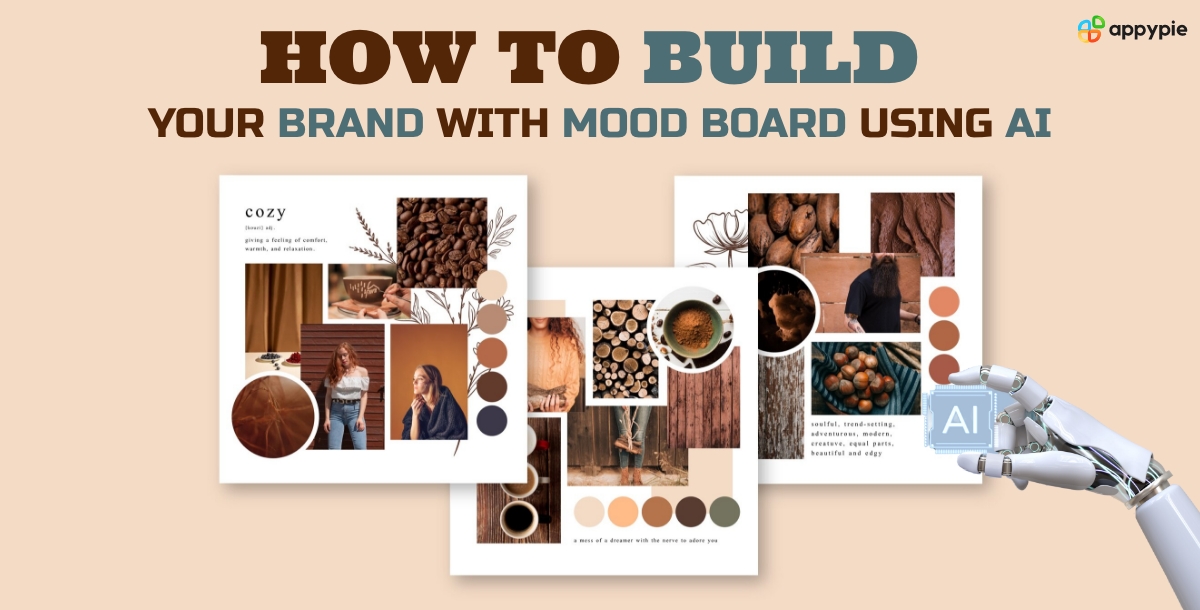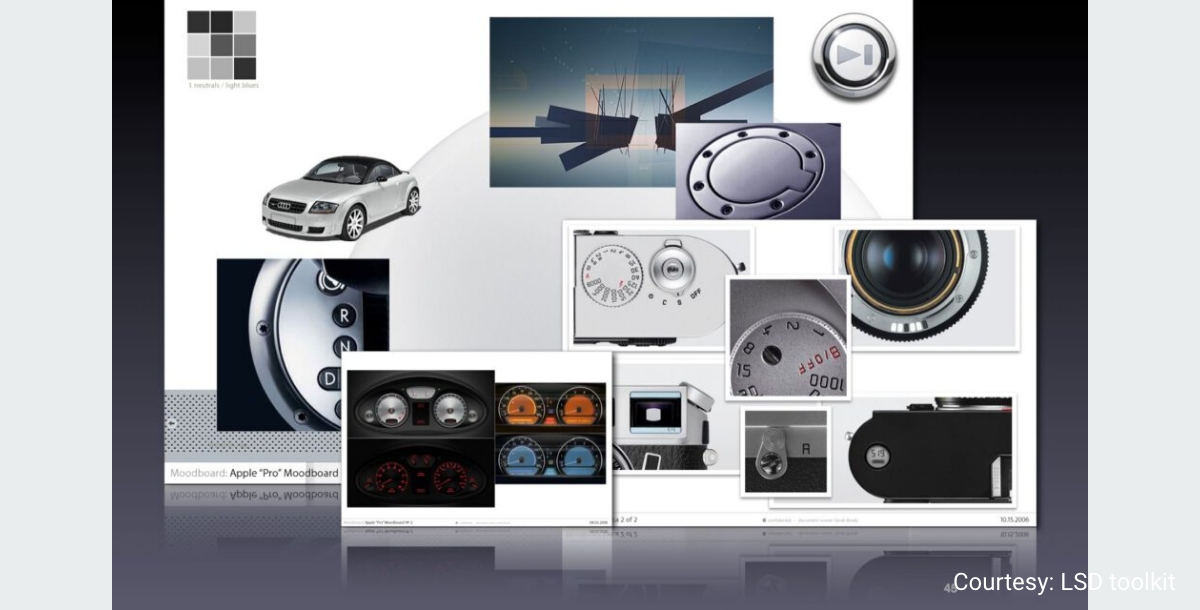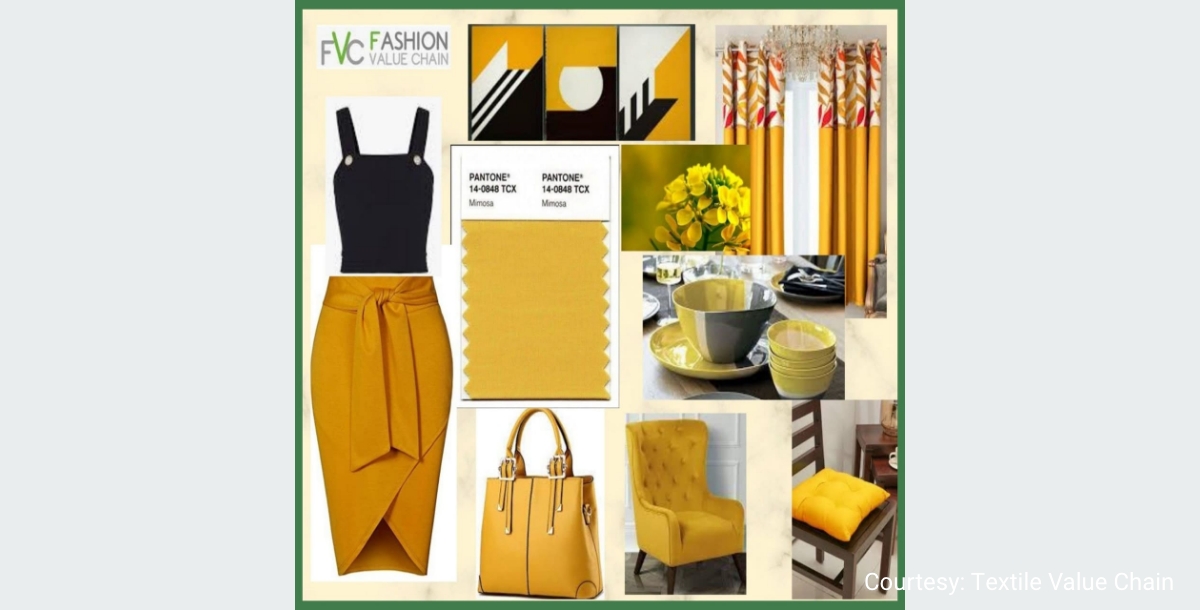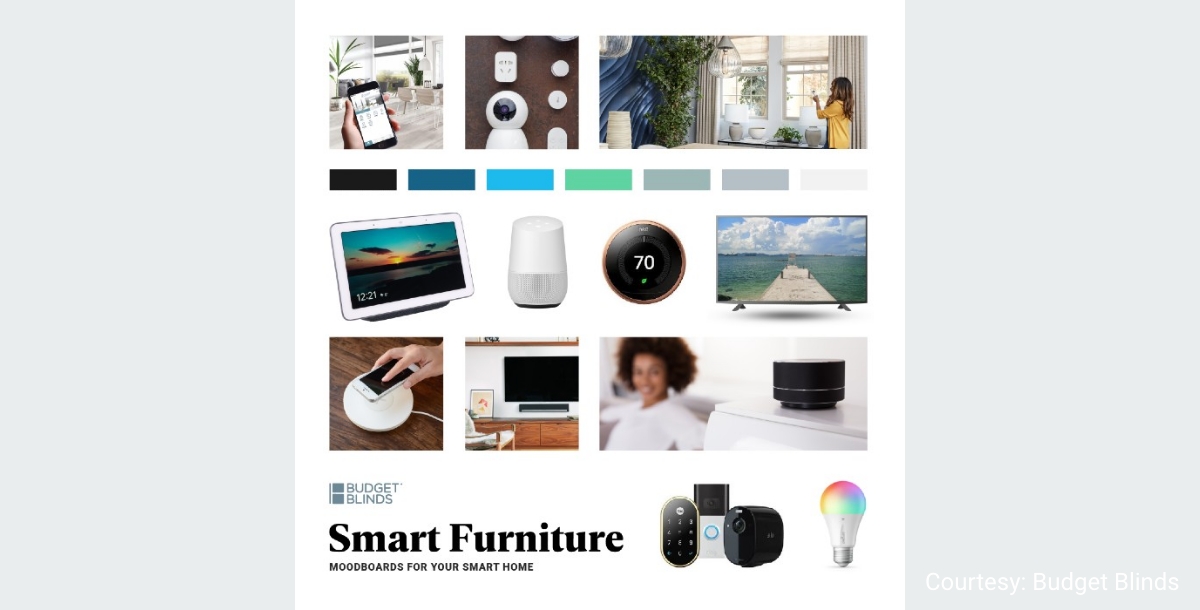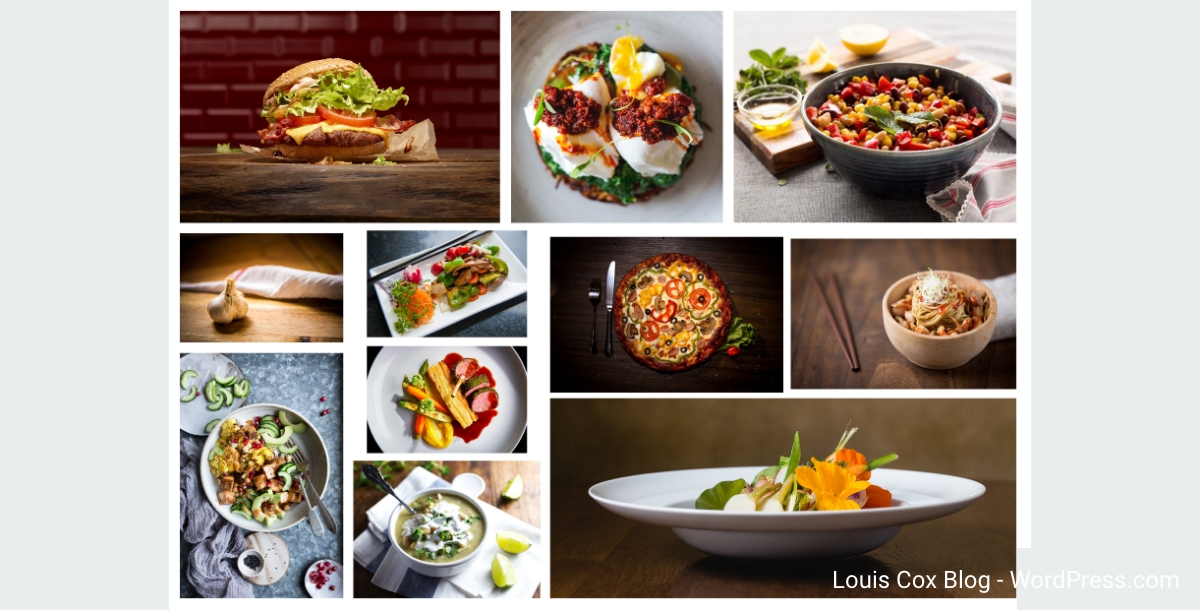How to Build Your Brand with Mood Board Using AI

Building a recognizable and cohesive brand identity is no small feat, and it often begins with the foundational step of creating a brand mood board. A mood board is a visual tool that communicates your brand's essence, aligning your vision with your brand’s tangible elements. This blog explores the intricacies of crafting a brand board or mood board to enhance your brand-building process, leveraging mood board examples, and navigating through the usage of AI design tools for an optimized experience.
What is a Branding Mood Board?
A branding mood board is a compilation of images, textures, colors, and patterns that collectively convey the aesthetic feel of a brand. It’s a visual representation that encapsulates the essence of what the brand stands for, its values, and its appeal to the consumer. This could include anything from a logo mood board that focuses on the brand's emblem to broader concepts that define the brand's overarching aesthetic and vibe.
Mood boards in the context of branding, particularly in sectors like fashion where "what is a mood board in fashion" becomes a pertinent question, act as a blueprint for brand identity, marketing materials, product design, and even web design. They help ensure consistency across various brand manifestations, from digital presence to physical products. You can streamline your moodboard creation with moodboard templates available online
How to Create a Brand Mood Board Using Appy Pie’s AI Moodboard Maker?
It is essential to create a brand mood board for defining your brand's visual direction. Appy Pie’s AI Moodboard Maker simplifies this process and lets you visualize your brand's essence easily. Here are 10 easy steps to make a brand mood board:
-
Step 1: Go to Appy Pie’s AI Moodboard Maker Page
Visit the Appy Pie’s AI Moodboard Maker Page. This is where you'll initiate the moodboard creation process.
-
Step 2: Explore and Select a Template of Your Choice
Upon reaching the AI Moodboard Maker page, you can browse through the available templates and hover over the one that best fits your project or design concept. You will get two options, ‘Preview’ and ‘Edit’. Select the ‘Edit’ option on your desired template to begin editing. Alternatively, you can also input a prompt to utilize the AI's capabilities to generate a mood board tailored to your specifications.
-
Step 3: Sign Up or Log In to Your Account
Post selecting a template, you will be directed to the login window. If you're a new user, you'll need to sign up for an account. Existing users can simply log in to their accounts to access the platform and its features with their credentials.
-
Step 4: Start Editing
Once logged in, you will be directed to the editor, where you can commence the editing process by accessing the selected template or generated mood board.
-
Step 5: Add or Edit Text
Use the ‘Text’ option on the left to add or modify text elements on your mood board. This could include headings, captions, or any other textual content relevant to your design.
-
Step 6: Incorporate Stock Photos
Explore the available stock photo library by selecting the ‘Photo’ option and integrate relevant images into your mood board design. Additionally, you can use the AI Image Generator feature to generate suitable images based on your project's requirements.
-
Step 7: Add Elements
You can further enhance your mood board by incorporating various elements such as shapes, icons, or decorative graphics. These elements can complement the visual aesthetic of your design.
-
Step 8: Upload Photos
Use the ‘Uploads’ option and then the ‘Upload an Image’ option that appears, select one image from your device and it will appear under the ‘Upload an Image’ option.
-
Step 9: Go to the ‘Download’ option for Saving
Once you've completed the editing process and are satisfied with your mood board design, go to the download option on the top right and provide a suitable name for your file to save your moodboard.
-
Step 10: Select File Format and Finish Downloading
Select the desired file format (e.g., PNG, JPEG, PDF) before initiating the download. After selecting the appropriate file format, click download. Your mood board will be saved on your device and is ready for use in presentations, portfolios, or any other applicable contexts.
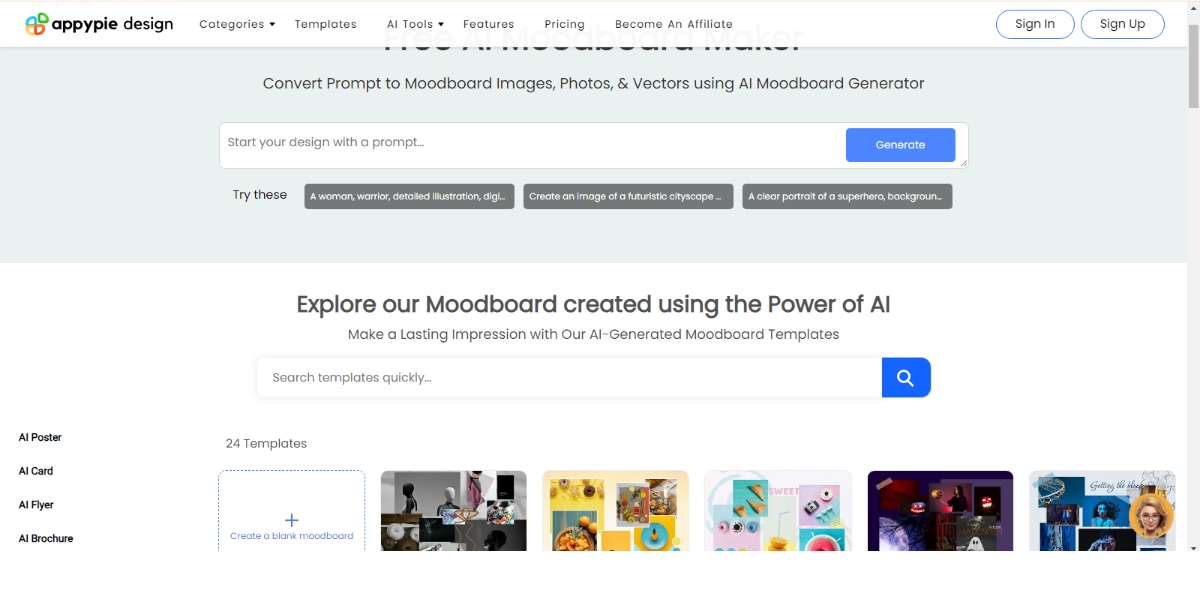
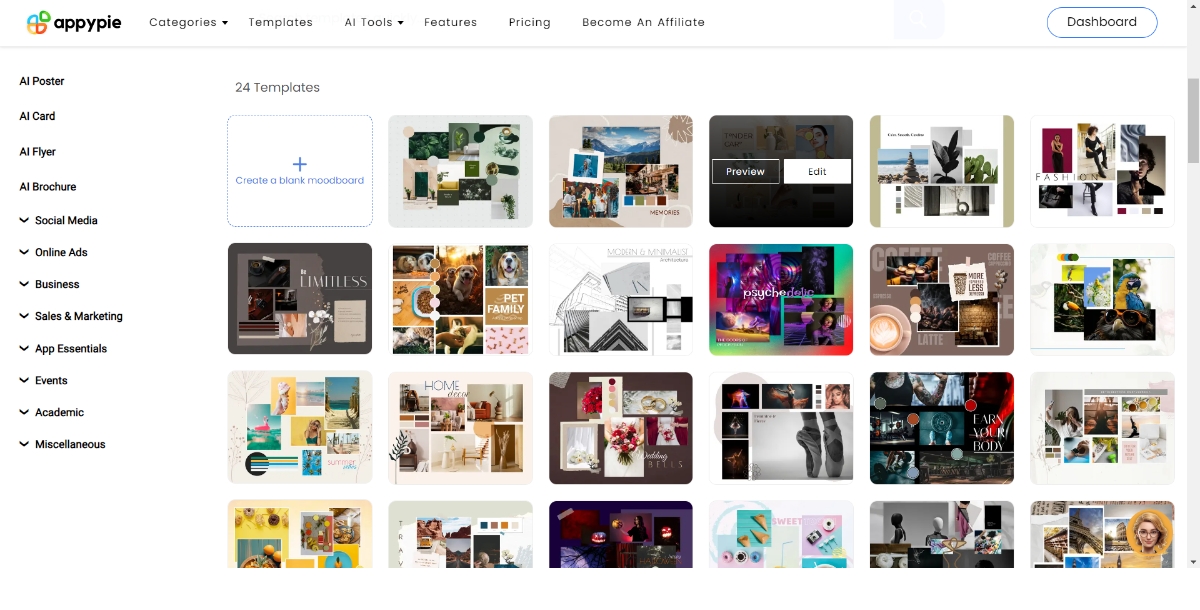
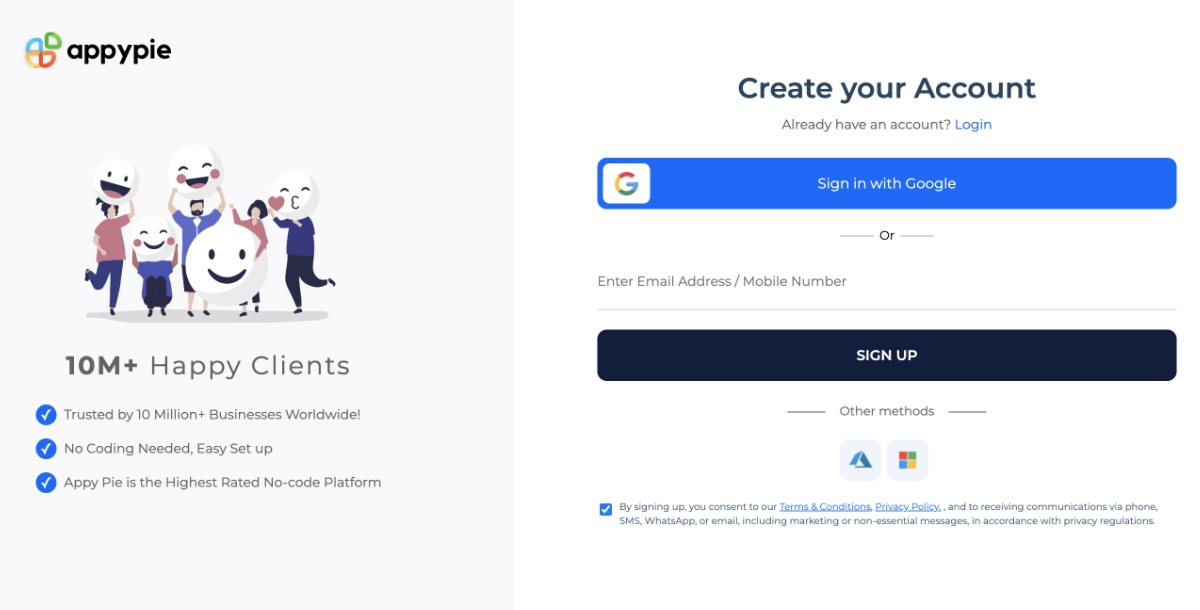
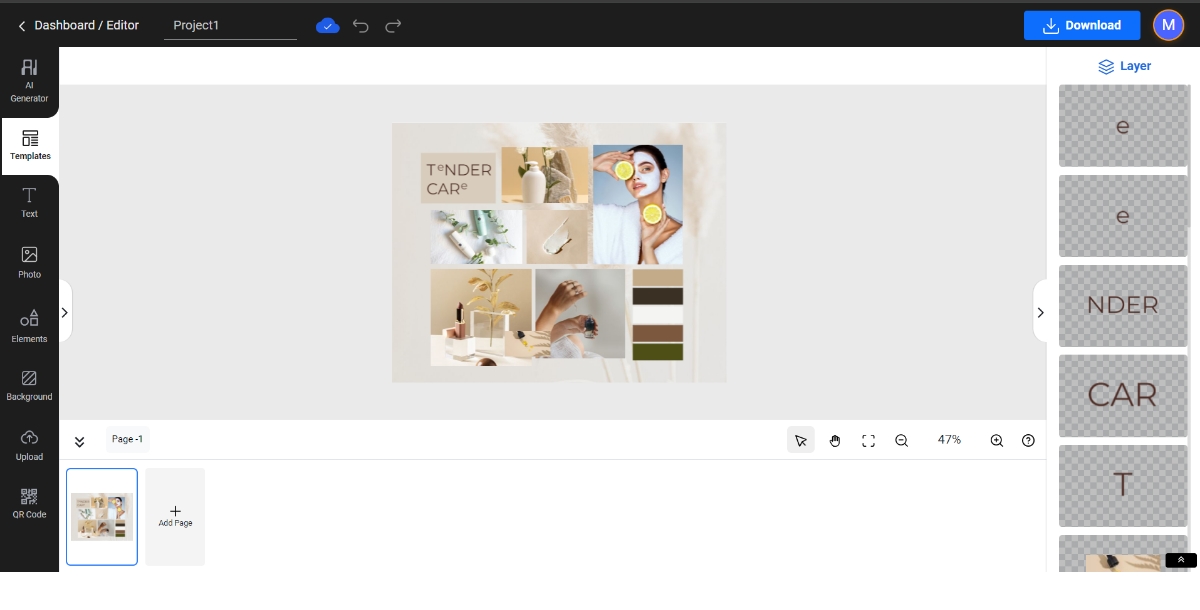
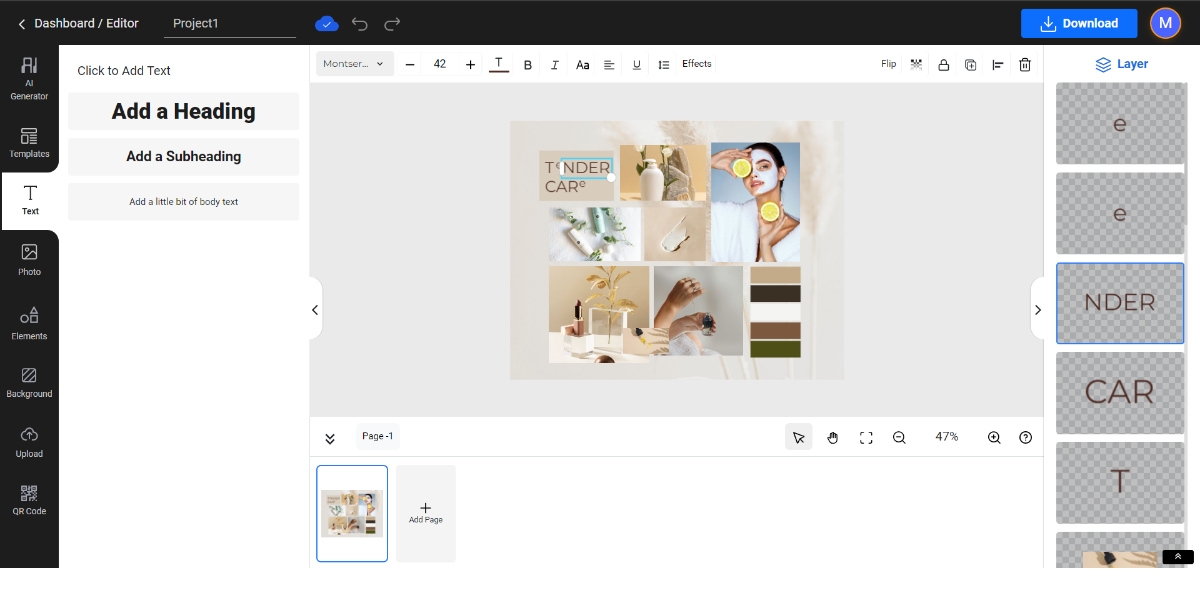
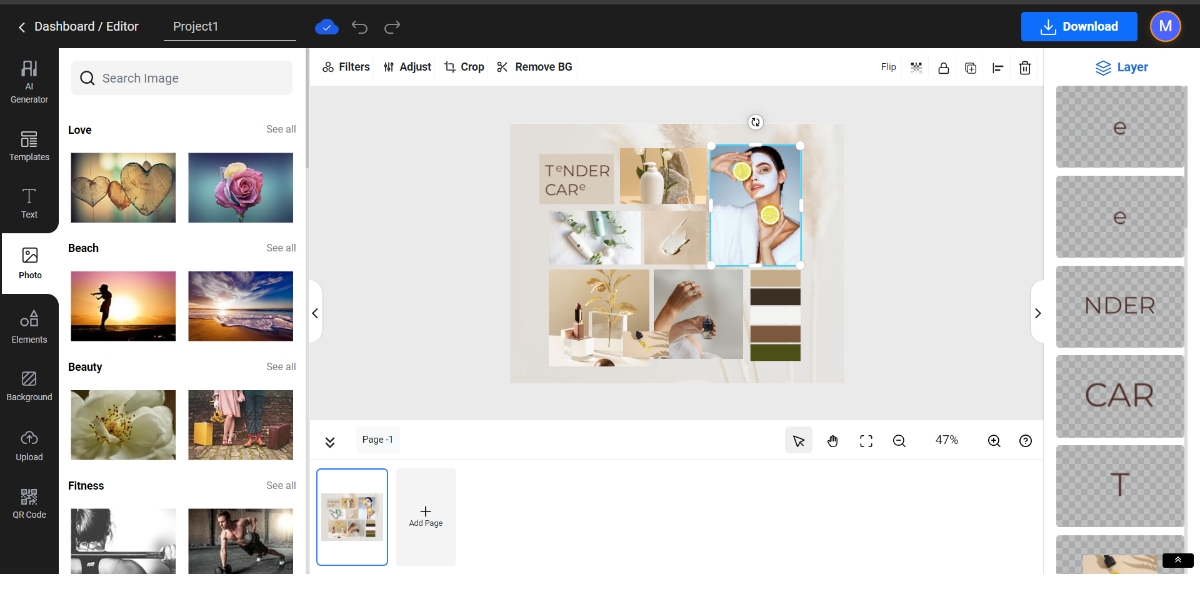
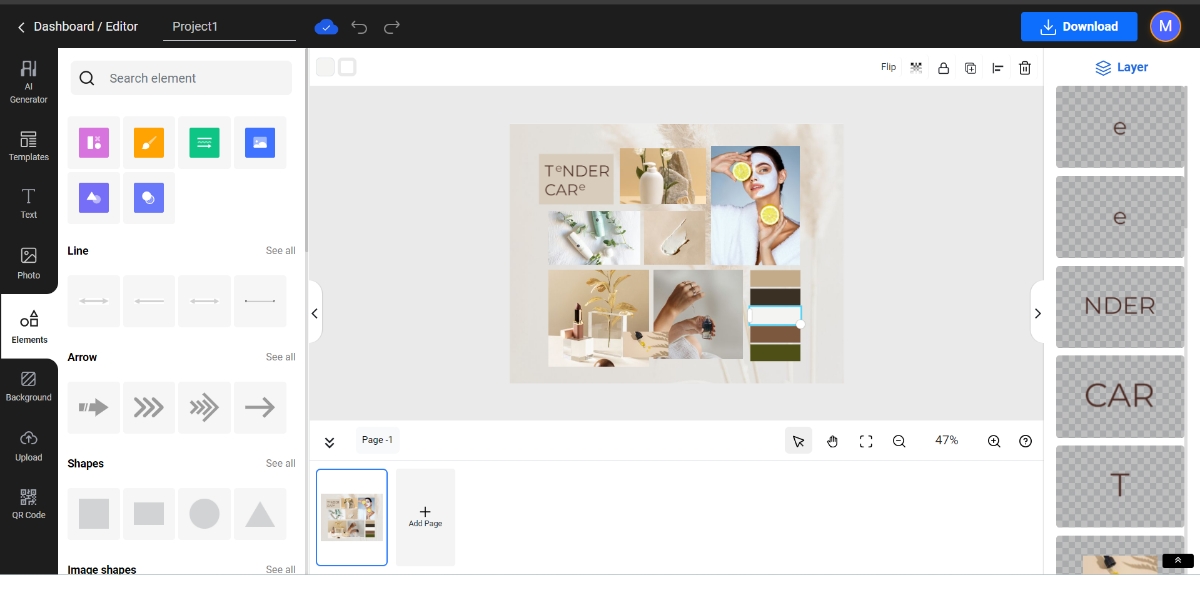
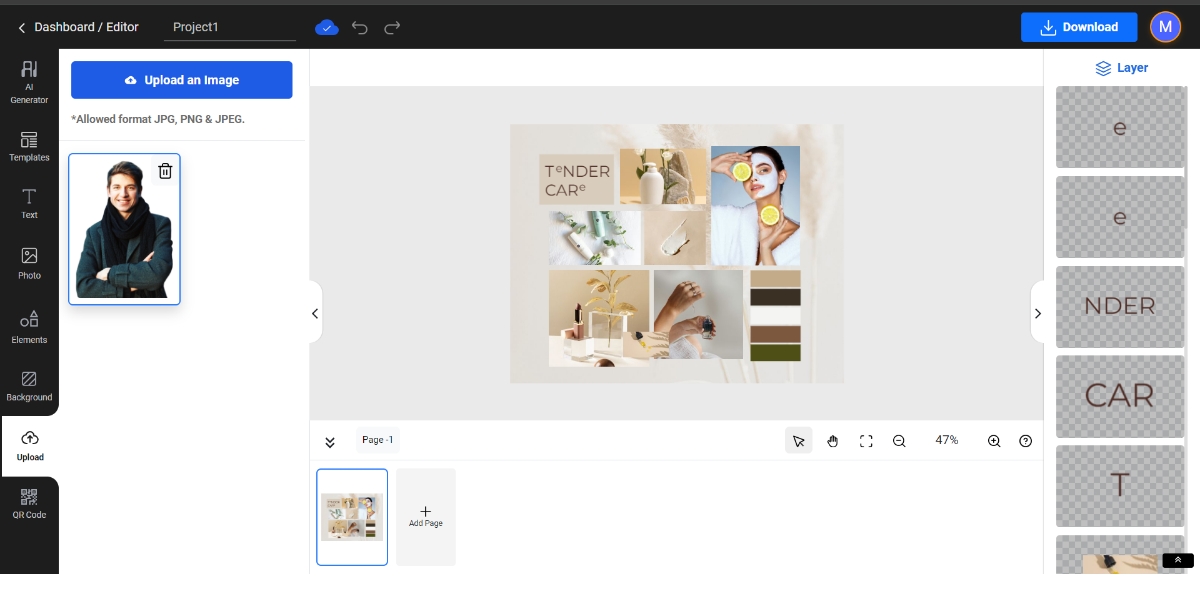
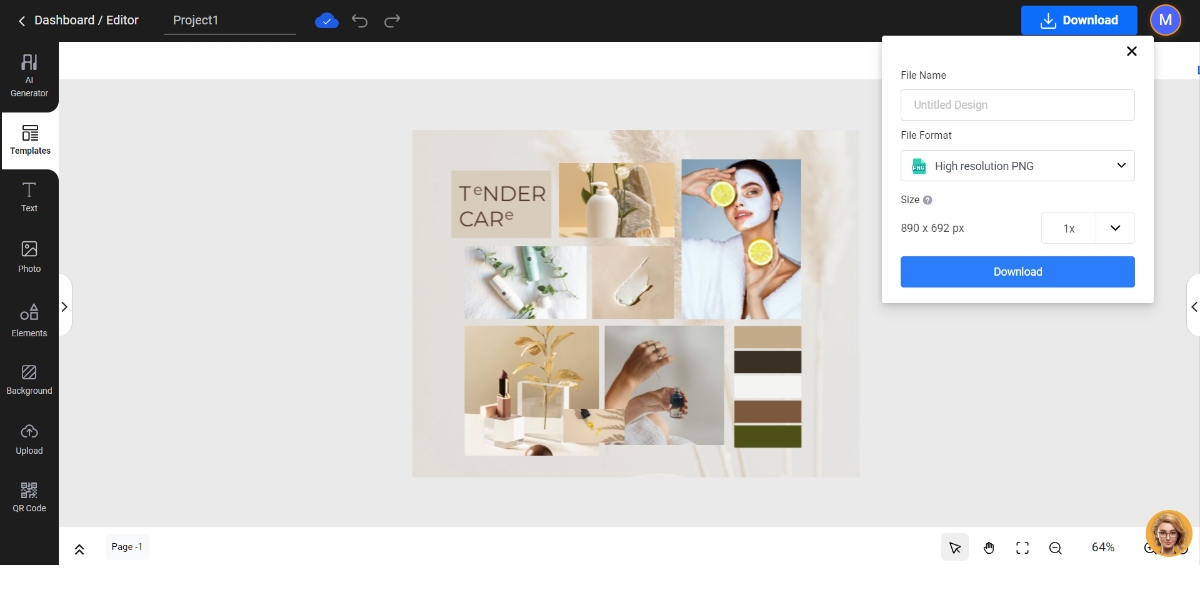
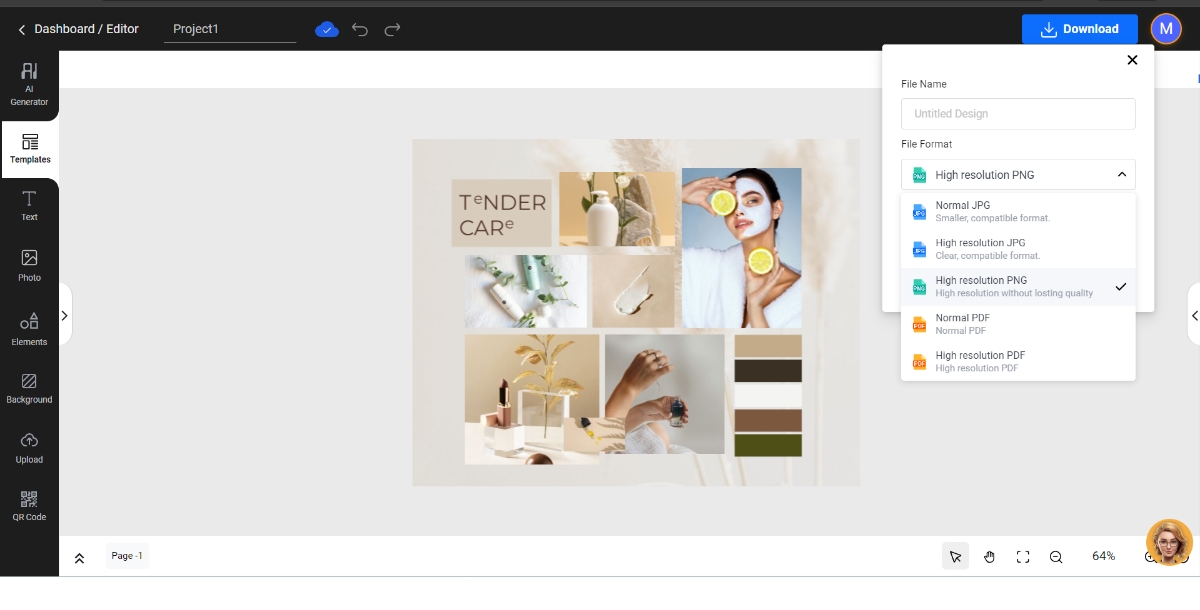
By following these steps for using Appy Pie’s brand mood board generator you can streamline the creation of a visual brand identity, empowering you to effectively communicate your brand’s aesthetic and values. Also read: Learn how to make a moodboard.
Importance of Branding Mood Board
A mood board encapsulates the essence of a brand's vision, ensuring that every stakeholder, from designers to marketers, aligns with a coherent brand identity. This strategic approach is not limited to branding; in fashion, for example, a mood board articulates the thematic and stylistic direction of a collection, demonstrating the broad applicability and significance of mood boards in various creative fields.
- Unifies Vision and Goals: A well-constructed mood board serves as a visual guideline, ensuring that everyone involved in the brand from designers to marketers shares a unified vision and goal.
- Enhances Brand Consistency: Maintaining a consistent brand image across all platforms and products is crucial. A mood board ensures that every aspect of the brand, from its website to its packaging, aligns with the established aesthetic guidelines.
- Facilitates Creative Communication: Mood boards provide a clear visual reference that can streamline communication among team members and with stakeholders, reducing misunderstandings and aligning expectations.
- Inspires Creativity: A comprehensive mood board, enriched with varied mood board branding elements, can spark creativity, providing new ideas and inspirations for brand strategies.
- Streamlines Design Process: By having a clear aesthetic direction, the design process becomes more efficient, saving time and resources and reducing the need for revisions.
Building Your Brand with a Branding Mood Board
When embarking on the journey of building your brand, leveraging the power of a branding mood board can significantly streamline the process and ensure a cohesive brand identity. This visual tool encapsulates your brand's essence through carefully selected elements, making the brand-building journey less overwhelming and more directed. Here are key points to consider:
- Gathering Inspiration: Begin by gathering inspiration that helps you understand how to make a mood board that resonates with your brand’s essence. Utilize mood board maker tools that simplify the process of compiling and organizing these elements visually.
- Leveraging Vision Board Maker Applications: For broader brand vision and goals, vision board maker tools can be instrumental. They help in visualizing future aspirations and the overall direction of the brand beyond immediate design elements.
- Choosing Brand Colors: The selection of Brand Colors is vital. These colors should not only reflect the emotional tone and personality of your brand but also appeal to your target audience, enhancing brand recognition.
- Incorporating Textures and Patterns: Adding textures and patterns can give depth to your brand identity. Ensure these elements align with your brand’s message and feel, enriching the visual storytelling of your brand.
- Selecting the Right Imagery: The imagery used should embody your brand’s values and speak directly to your audience, effectively conveying the lifestyle and ethos your brand represents.
- Opting for Appropriate Typography: Typography plays a crucial role in communicating your brand’s voice. Select fonts that complement your brand’s character and make your message more impactful.
- Exploring a Storyboard: For projects requiring a narrative sequence, such as video or website design, learning how to make a storyboard is beneficial. This step-by-step visual planning tool can help in pre-visualizing complex ideas.
- Utilizing AI Design Tools: AI design tools can offer innovative solutions and suggestions, streamlining the creation of mood boards, storyboards, and other visual assets, making the process more efficient and creative.
By carefully considering these elements and leveraging the right tools, you can create a compelling and cohesive mood board that effectively communicates your brand’s vision and values.
Successful Branding Mood Board Design - Key Tips
Crafting a successful branding mood board is important in defining and communicating a brand's visual identity. Start your journey by exploring a diverse collection of visuals. From these, select images that align closely with your brand’s vision, using mood board templates to organize your thoughts and inspirations efficiently. Here's how you can create an impactful mood board:
- Understanding Your Audience: It’s essential to design your mood board with your target audience in mind. Their preferences and expectations should guide the choice of colors, imagery, and overall design aesthetic. Tools like vision board templates can help tailor your mood board to resonate well with your audience.
- Prioritizing High-Quality Images: The clarity and quality of images on your mood board can significantly impact its effectiveness. High-resolution images prevent your mood board from looking cluttered or unprofessional, ensuring a crisp and clear presentation of your vision.
- Organizing with Purpose: A well-organized mood board strikes a balance between variety and cohesion. The layout should be logical and aesthetically pleasing, guiding the viewer’s eye through the board in a way that tells a coherent story of your brand.
By following these key tips and making the most of available digital tools and templates, you can create a mood board that effectively communicates the essence of your brand and visually aligns with its future direction.
Some Branding Mood Boards in Action
Mood boards serve as a visual storytelling tool, articulating the essence and direction of a brand's identity across various industries. They convey the unique attributes and aspirations of a brand. Each industry leverages mood boards to communicate its unique brand narrative, facilitating a cohesive and immersive brand experience. Here’s how different sectors utilize mood boards:
- Automotive Brands: These mood boards focus on sleek lines and dynamic visuals, paired with a color scheme that echoes themes of speed and innovation, capturing the essence of modern automotive design.
- Textile Industry: Mood boards in this realm display fabric samples, trendsetting colors, and patterns, narrating tales of comfort, eco-friendliness, or opulence reflecting the industry's diverse market demands.
- Technology Firms: For tech entities, the emphasis is on futuristic designs and minimalist aesthetics, using cool metallic hues to symbolize the forefront of technological advancement.
- Food and Beverage: In this sector, mood boards highlight rich textures and appetizing colors, accompanied by imagery that brings to life the sensory pleasure of food and drink, enhancing the consumer experience.
Conclusion
Creating a mood board is essential in building a brand that resonates with your target audience and stands out in the marketplace. It sets the visual tone for your brand and ensures consistency and cohesion across all your branding efforts. With the help of mood board branding examples and the strategic use of tools like brand mood board generators and AI Design Tools, you can craft a mood board that perfectly captures the essence of your brand. Embrace the process, and let your mood board be the guiding light for your brand's visual journey, ensuring that every element, from your logo to your website design, sings in harmony with your brand's core identity.
Related Articles
- The Beginner’s Guide to Sales Forecasting
- Alexa Kid Skills Developers in UK & Germany Make It to the Amazon Developer Rewards Program
- Chat with URL and Site
- 30 Unique Business Ideas for Beginners
- Unified Scene Representation and Reconstruction for 3D Large Language Models
- How to Take a Passport Photo with Your iPhone: A Step-by-Step Guide
- Apple Revises The Controversial Guideline 4.2.6 Giving A Respite To Template App Owners
- What is Image Inpainting? A Comprehensive Guide to Reviving Your Photos
- How to Set Up an Out of Office Message in Gmail for Efficient Communication
- How to Present a Case Study- Case Presentation Examples
